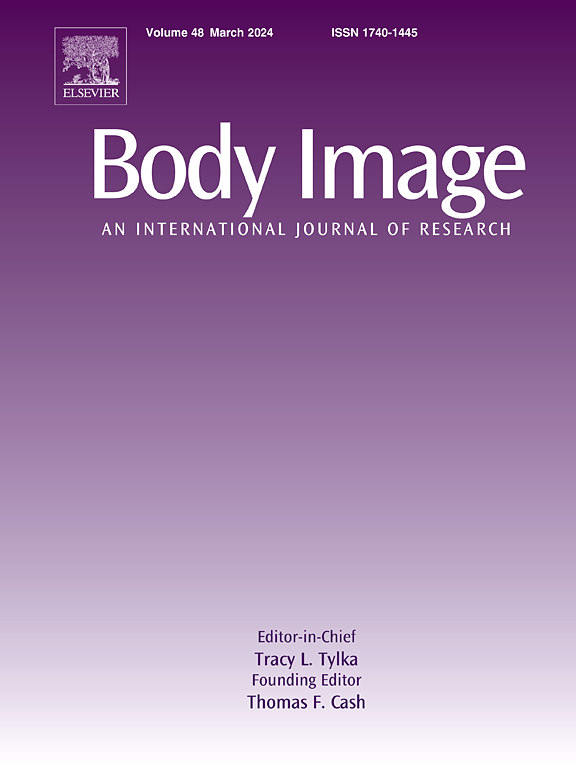Exploring the reciprocal relationships between body image flexibility and body fat and muscularity dissatisfaction: An 18-month longitudinal study in Chinese adolescents
Abstract
Body image flexibility has shown robust negative associations with body dissatisfaction. However, research in this area is confined to cross-sectional studies on adults in Western cultural contexts. Responding to these gaps and the unique cultural nuances and increasing prevalence estimates of body dissatisfaction in China, we examined the bi-directional nature of body image flexibility and body fat and muscularity dissatisfaction in Chinese adolescent boys and girls (N = 1381, 57.3 % girls) at two points over 18 months (Wave [W] 1=baseline, W2=18 months later). We also explored sex differences in longitudinal models. In boys, higher W1 body image flexibility was associated with lower W2 body fat dissatisfaction, and higher W1 body fat dissatisfaction was associated with lower W2 body image flexibility. Null prospective associations between body image flexibility and muscularity dissatisfaction were identified in boys. In girls, higher W1 body fat and muscularity body dissatisfaction were associated with lower W2 body image flexibility. Higher W1 body image flexibility was associated with lower W2 body fat and muscularity dissatisfaction in girls. We found no significant sex differences in the models. Findings advance a multicultural understanding of the temporal and bi-directional links between body image flexibility and body fat and muscularity dissatisfaction in Chinese adolescents.

 求助内容:
求助内容: 应助结果提醒方式:
应助结果提醒方式:


